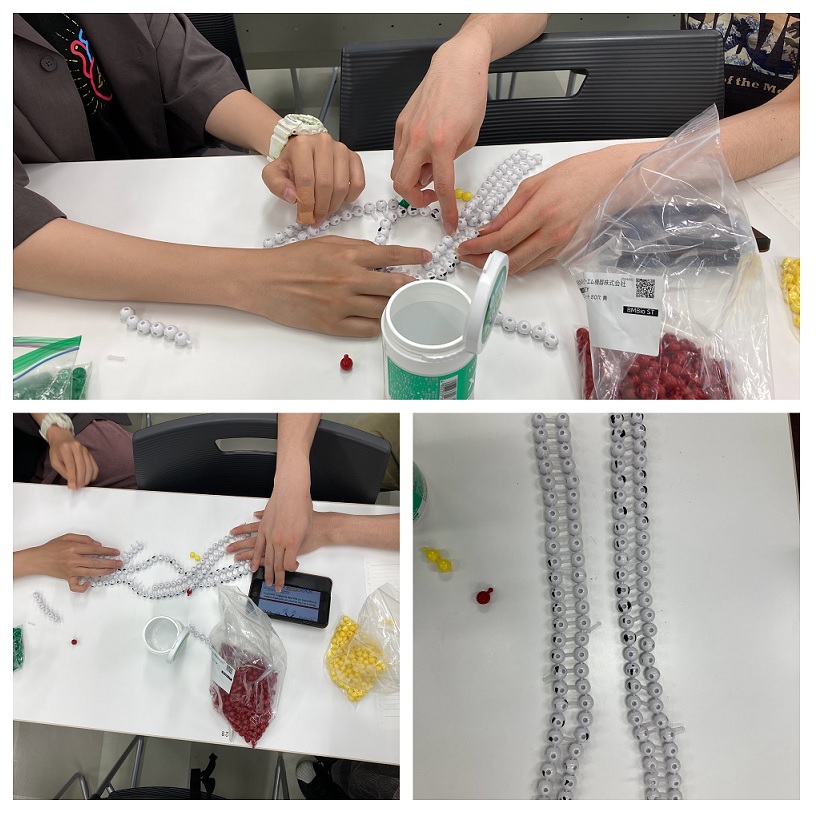Hands-on learning
Hands-on learning brings fun, communication and knowledge to genetics --- By Adam Weitemier
Meiosis is the process by which genetic material is replicated and distributed among gametes. Gametes are the parent cells in sexual reproduction. Some features of meiosis may be difficult to understand through explanation and textbook images alone. Fortunately, the linear structure of genetic material like DNA and chromosomes can be modeled in the classroom with bead chains and other simple items. In fact, model DNA kits are quite popular in many parts of the world.
So, I got ahold of a poppit bead DNA kit so that our 2022 General Molecular Biology class could learn about genetics by playing with beads. First, we used a modified version of a meiosis bead exercise developed by LaFountain and Rickards (2022). This activity uses connectable plastic poppit beads, dental rubber bands, tape and mini-straws to represent chromosomes and supporting molecular structures. The molecular steps within meiosis are simulated by attaching, detaching, and changing the arrangement of the parts. In other words, we could make meiosis happen and watch all the steps from beginning to end without even using a microscope.
I could sense the curiosity and engagement from the students as they modeled their replicated chromosomes. More importantly, I could immediately tell that they were learning important concepts in a meaningful way. The meiosis activity was such a success that we used the beads again in a later lesson to simulate the way that worker proteins called enzymes disconnect and exchange segments of two similar DNA molecules, something called crossing over. Personally, it has made me very happy to be able to bring these activities and others to this class so that students can engage with the material in alternative ways.
Besides demonstrating important concepts, I believe that hands-on activities like these can also provide excellent opportunities for practicing communication skills. Partners can explain to each other what is happening as they go through each step, or people can draw from their own experience to make a presentation more interesting and thorough. In fact, these hands-on exercises may be particularly useful for non-native speakers because they can polish their English scientific communication skills in a casual setting. So, in this way our genetics activities were a perfect addition to this English Biology program class.
[References]
LaFountain, J. R., Rickards, G. K. (2022). Meiosis Remodeled: Inclusion of New Parts to Poppit Bead Models Enhances Understanding of Meiosis. CourseSource, (Version 1.0). QUBES Educational Resources. https://doi.org/10.24918/cs.2022.2



